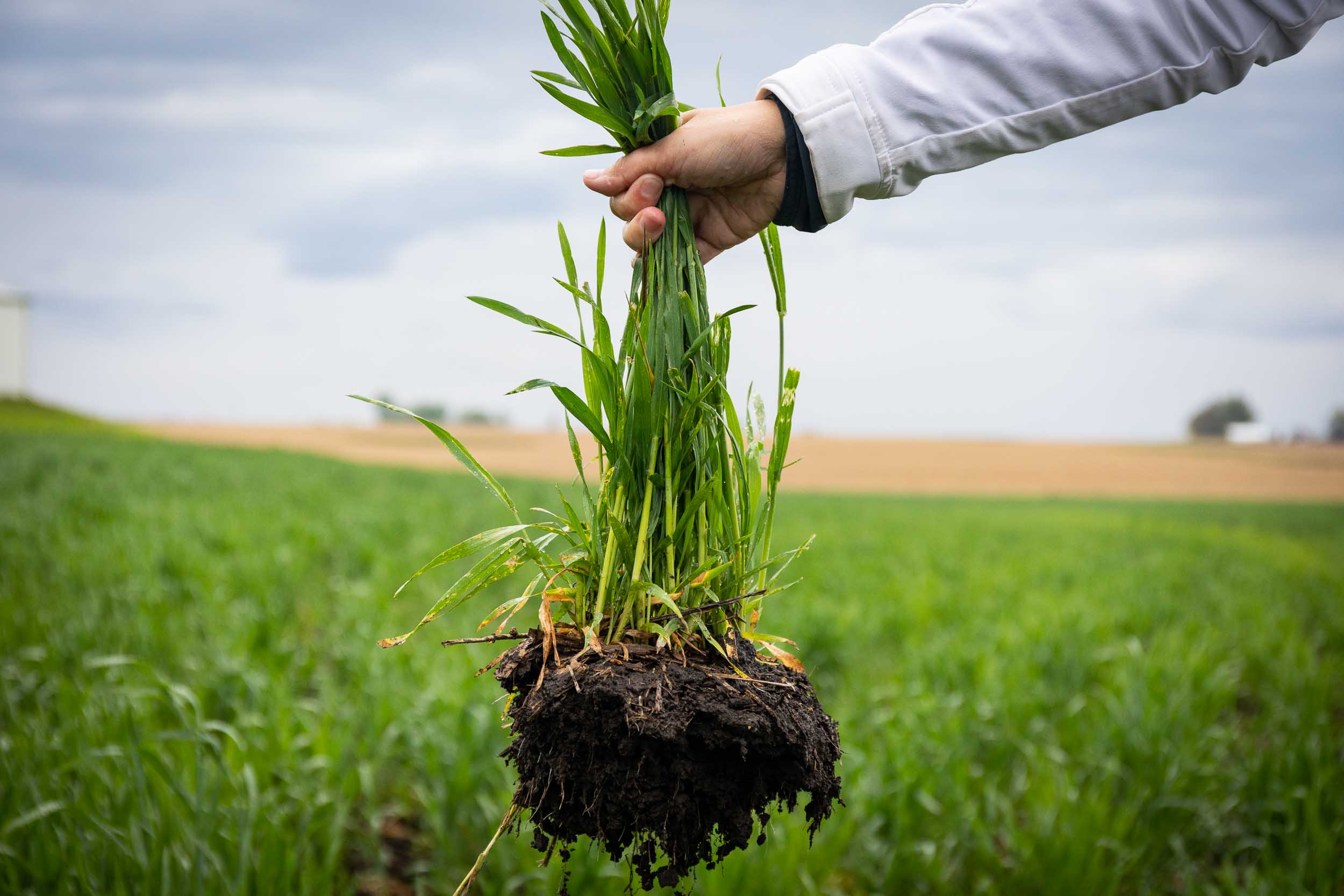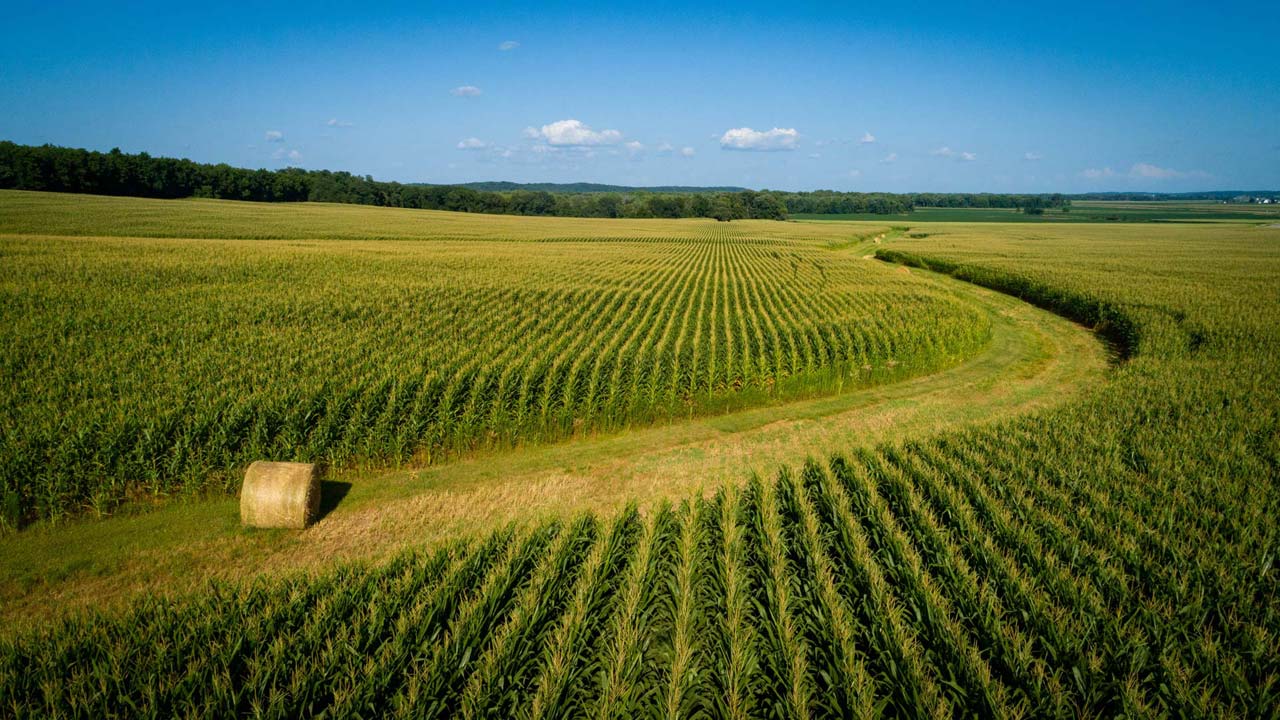2024 April Stewardship Advocate

This month’s Stewardship Advocate features denitrifying bioreactors, a relatively new edge-of-field water treatment technology used to reduce nitrate-nitrogen in tile water coming from crop fields. Bioreactors are below-ground chambers, where tile water mixes with a high-carbon material like woodchips in a low-oxygen environment. Naturally occurring microorganisms on the wood chips consume the nitrates in the water and release it as nitrogen gas. The average bioreactor can handle up to 100 acres of upstream tile drained land. Installed bioreactors have shown up to a 54% nitrate load reduction, with an average nitrate removal of 43%.
Iowa was one of the first states to research and install bioreactors about 10 years ago. Since that time, they have grown in popularity due to their relatively low out-of-pocket cost for landowners and their effectiveness in removing nitrates from tile water. In 2023, nearly 300 bioreactors and saturated buffers were completed in Iowa and over 300 are in development.
A woodchip bioreactor is a rather straight-forward design with just a few main components: a water control structure to divert water from the field tile line, a trench filled with woodchips and an outlet structure to control water flow from the trench (figures 1 and 2). Bioreactors are engineered to move field water through the wood chips while still allowing the field to drain normally. Often the bioreactor has a bypass pipe or channel to divert water away from the woodchip trench to prevent heavy rainfalls and full tile lines from overwhelming the bioreactor. In addition, excess rainfall may run off on the surface above and to the sides of the subterranean bioreactor.

Figure 1. A schematic drawing of a denitrifying bioreactor. Source: The Water Table

Figure 2. A bioreactor filled with woodchips. Source: Iowa Learning Farms
Bioreactors’ positioning is determined by the field tile layout and discharge location of the stream or ditch near the bioreactor. There are several design factors to consider when locating a bioreactor, including:
- 30-100 acre drainage area
- 30’ x 100’ to accommodate the bioreactor’s footprint
- Consistent tile flow from the drainage area
- Clean, coarse, square woodchips, ½” to 2” in size
- Properly sized control structures for the drainage area
Cost to Install a Bioreactor:
The all-in cost to install a denitrifying bioreactor is highly variable and depends on the drainage area, type of water control structures, size of the bioreactor and source of woodchips used. In a recent article from the University of Illinois, the construction cost averaged $11,000-$12,000 per bioreactor unit. The woodchips in bioreactors have an average lifespan of 8 to 10 years and need to be recharged periodically. The recharge cost of removing and replenishing the wood chips depends on the trench’s size (Bioreactor Installation Costs).
Financial assistance is available to offset the costs of installing and recharging bioreactors. Payments to landowners can be obtained through the state and through federal NRCS, Environmental Quality Incentives Program, the Conservation Stewardship Program and the Farm Service Agency’s Conservation Reserve Program. Cost-share funding pays up to 75% of the installation costs and recharge expenses. In addition to government incentives, there are a number of private funding sources available.
Bioreactors and saturated buffers are very amenable to the new “Batch and Build” programs that are gaining popularity across Iowa. The goal of the batch and build program is to decrease the barriers for farmers and landowners considering installation of voluntary water quality projects. Overall cost savings of up to 30% can be realized when multiple projects are surveyed, engineered and constructed as part of a batch and build project. All paperwork, including site planning, contractor hiring, government approvals and project funding, is coordinated and streamlined with a city, county or non-profit acting as fiscal agent.
Landowners interested in constructing a bioreactor should contact their local NRCS office or the Iowa Department of Agriculture and Land Stewardship (IDALS) for information on the design and availability of cost-share funding.
- Iowa Natural Resources Conservation Service – Iowa NRCS
- Iowa Department of Agriculture and Land Stewardship – IDALS
Latest Information:
Farmer to Farmer: Nick Helland

Nick Helland and his family farm in Story, Boone, Polk and Dallas County in central Iowa. It is truly a family operation with Nick farming with his dad, uncle and cousin. They have a corn-soy rotation and contract finish hogs on their farm. They also grow seed beans for a local seed company.
Sustainability and profitability are key motivators for the Hellands. “Soil health is a key component of our sustainability efforts. We do reduced till or no-till ahead of corn and we no-till all of our soybeans,” said Nick. “We know the fewer trips across the fields saves fuel, reduces compaction and builds our soils. Perhaps the greatest benefit the last few years is that reducing our tillage preserved the precious moisture we need for the crops.”
The Hellands have planted cover crops for more than 10 years. Nick said they like to experiment with different combinations of cover crop species. “We focus mainly on rye following corn and oats following soybeans but have also used multiple species mixes and tried species such as camelina to try to find the right mix.”
Nick and his family plant 109-116 hybrids at a rate of 34,000-36,000 seeds per acre. They have found this combination of seeding rates and maturities gives them the best chance of success in the fall. Their fertilizer program includes fall anhydrous with a nitrification inhibitor and is supplemented by hog manure and chicken litter. “We focus more on farming profitably rather than chasing yields,” said Nick. “Of course we want the best yields we can achieve but we also want to know we want to be more sustainable as well.”
In addition to their many sustainable practices, the Hellands are strongly motivated to improve water quality. “We had one of the first bioreactors in Polk County on one of our farms in partnership with our landowner. Seeing the relatively small impact to the crop area of the field vs. the positive nitrate removal rates gave us confidence we could do this in more areas,” said Nick. “The same farm also has a saturated buffer strip treating other tile on that farm. We added more bioreactors and saturated buffers in the first phase of the 4 Mile Creek batch and build program and have continued to add fields in Boone and Story Counties as those programs have expanded into those watersheds. The no-cost and low lift of the batch and build programs have really made these much more viable.”
It’s one thing to construct an edge of field practice but the satisfaction is knowing how effective they are in removing nitrates from tile water. “Our first bioreactor removed 70-80% of nitrates and the saturated buffer had even higher removal rates,” said Nick. The Hellands continue to look for ways to do even more and are currently finalizing plans to add a wetland on one of their Boone County farms to pair up with two bioreactors and saturated buffer on that farm.
2023 was a year with challenges but the Hellands use these challenges to make positive changes the next growing season. For example, they saw more tar spot pressure last year and were able to treat their corn crop to reduce the impact on yield. Nick says of using 2023 experiences in 2024, “We saw a greater return on fungicides than in years past and will scout our fields even more in 2024 to ensure we treat tar spot to keep it in check. We also saw more corn rootworm pressure last year so we are testing new trait combinations in 2024.”
Even with farming and a full-time job, Nick makes time to be actively engaged with Iowa Corn. He currently serves on the Research and Business Development committee after serving on two other committees and being in the I-LEAD 9 cohort. Regarding Nick’s involvement in Iowa Corn, he says “I believe that Iowa Corn is a great organization serving corn farmers in many different ways. I feel my background in farming and industry is appreciated by other farmers I serve with. I believe I am making a positive impact and want to stay involved.”
